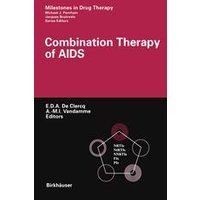
Combination Therapy of AIDS
€160.49
Erscheinungsjahr: | Seiten:
HIV infection has been a greater challenge to current medicine than any other viral disease ofmodem times. HIV leads to a persistent infection and the virus has an immense genetic flexibility under selective pressure. During its replica tive cycle in patients, HIV accumulates mutations at such a high rate that the selective pressure inflicted on the immune system, or generated by antiviral drugs rapidly triggers the appearance of escape mutants. Currently available drugs, when used singly, are not capable of suppressing virus replication in patients to such a level that the generation of mutations, from which a variant resistant to immune attack or antiviral drugs can be selected, is prevented. This is the main reason why combination therapy, usually of three drugs, has become the standard procedure for the treatment ofAIDS. It is obvious that virus eradication will not readily be achievable, so that drugs have to be taken for a prolonged time or even lifelong so as to keep the viral load as low as possible. Whether the currently used drug combinations will be able to control virus replication in a particular patient for such a pro longed period of time depends on many factors, most of which are addressed in the different chapters of this book. The aim of antiviral drug combination therapy for AIDS is ultimately to restore full function of the immune system.




